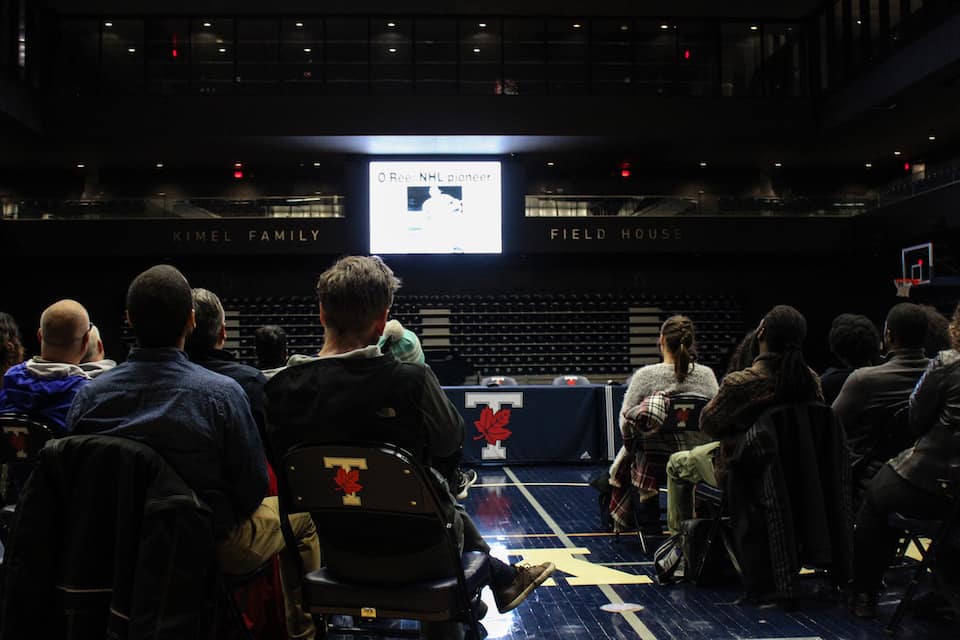It’s not often that an entire culture can be summed up in one word — especially in Canada, which boasts one of the most diverse populations in the world. But when you mention hockey, Canadians are often on the same page; it’s not a sport but a way of life.
Why, then, in a country that is a tossed salad of heritages, ethnicities, and cultures has our national past-time only been reserved for a select few? This is but one topic explored in the Canadian documentary Soul on Ice: Past, Present & Future.
A tri-campus collaborative effort between Hart House, the Faculty of Kinesiology and Physical Education, and the athletics and recreation departments at UTM and UTSC, Soul on Ice was screened Thursday night at Goldring to a sizeable crowd.
“We thought it would be kind of neat to put it in an actual sports space, which is why we’re hosting it at the Goldring Centre,” said Michelle Brownrigg, director of co-curricular education and the chief program officer at Hart House. “It just kind of creates a different experience than perhaps seeing it in a theatre in terms of the connection to sport.”
In the documentary, filmmaker Kwame Mason traces the history of racism in hockey, specifically in Canada, from Willie O’Ree, the first black NHL player in the league’s history, to up-and-comer Brampton native, NHL draft pick Jaden Lindo.
Mason describes the lack of Canadian cultural discourse about the Coloured Hockey League as inspiration to sell his condo and pursue the making of the documentary three years ago.
“I grew up here, so how come nobody in school told me about this?” asked Mason, regarding the moment he learned of the league’s existence. “How come Hockey Night in Canada never talked about this? How come nobody spoke about this?”
Established in Nova Scotia in 1895, the Coloured Hockey League was comprised of black hockey players from leagues across the Maritimes. It is widely considered as the first league to allow goalies to drop to their knees to stop a puck — a rule later adopted by the NHL — and may have been the first league to see a player execute a slap shot.
Despite the emergence of the league, racism continues to pepper hockey, exemplified by the lack of diversity among rosters. “As Canadians… we say ‘we’re a multicultural country,’ we always say that hockey is our national sport, so when you combine the two you would think that the sport would reflect what our country looks like, and it doesn’t” said Mason. “It’s 2016 and there’s 10 per cent minorities in hockey so you have to wonder why [that is].”
The movie screening finished with a panel discussion featuring Mason, the Blues men’s hockey coach Darren Lowe, and Jaden Lindo’s mother, Heather Lindo. Lowe, who along with being the first black head coach in university hockey, was a member of the NHL playing, like Jaden Lindo, for the Pittsburgh Penguins.
Lowe, who played in the 1983-84 NHL season, explained race is not the identifying factor that should separate players in the game: “The weirdest thing for me is when I played for the Pittsburgh Penguins, the story in the paper was ‘first black player for the Pittsburgh Penguins’ and I was so excited to be in the NHL I didn’t know why that was so important,” said Lowe. “For me, hockey is a huge part of my life. I’ve coached here for many years and enjoyed the experience, and I never really think of myself as a black coach or black hockey player, just a hockey person.”


